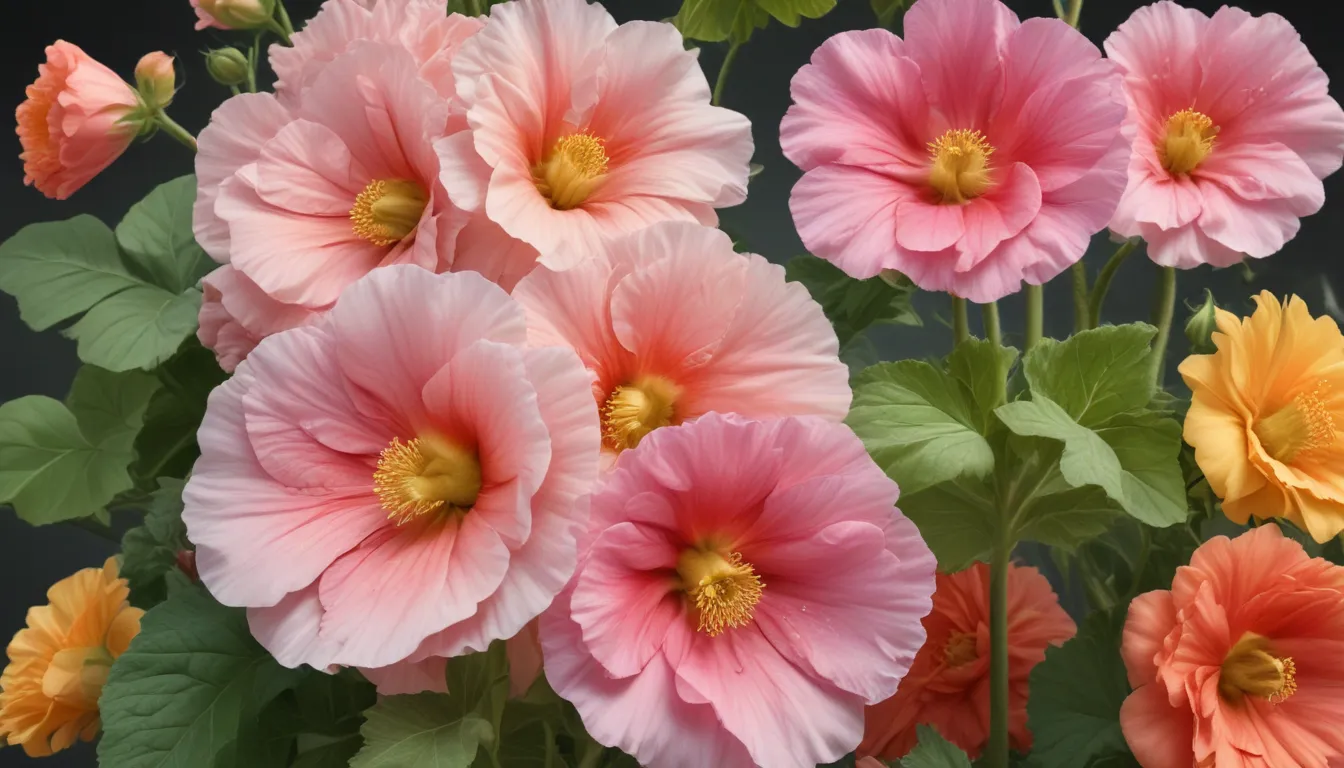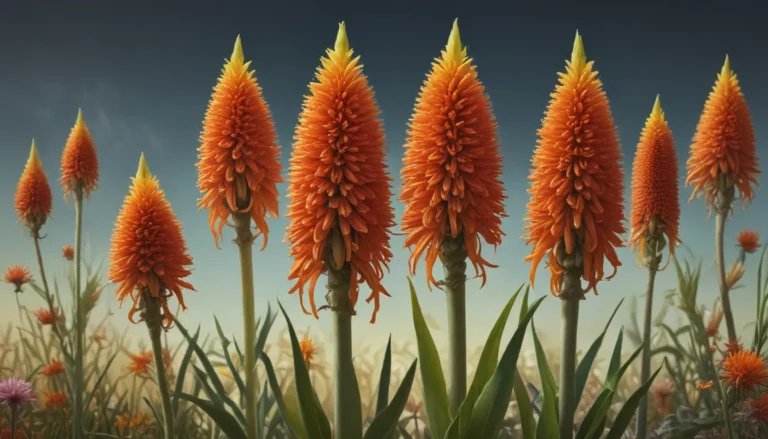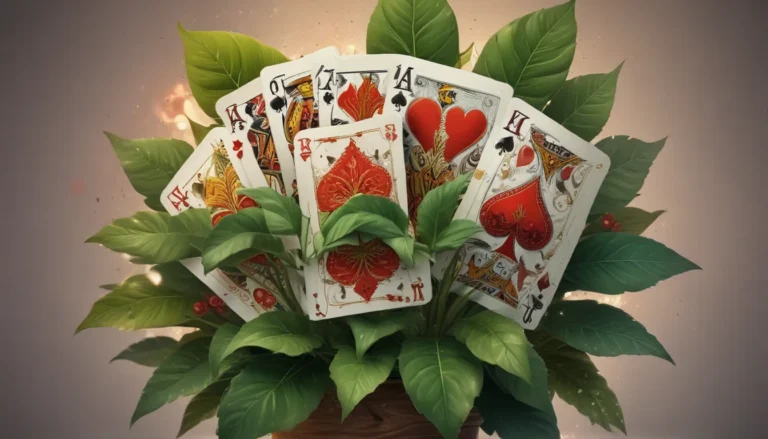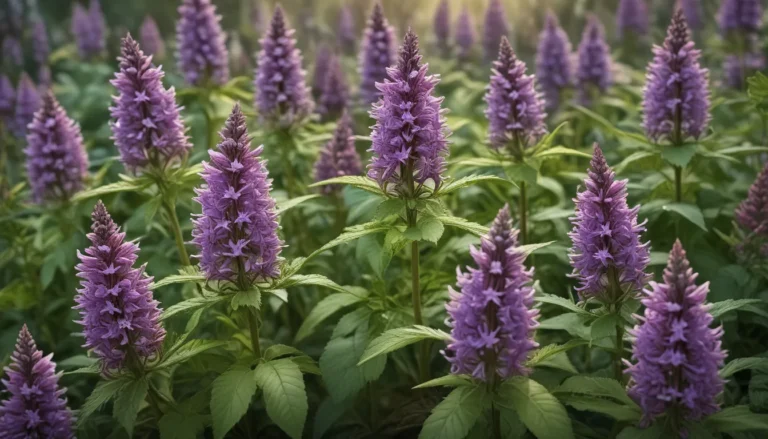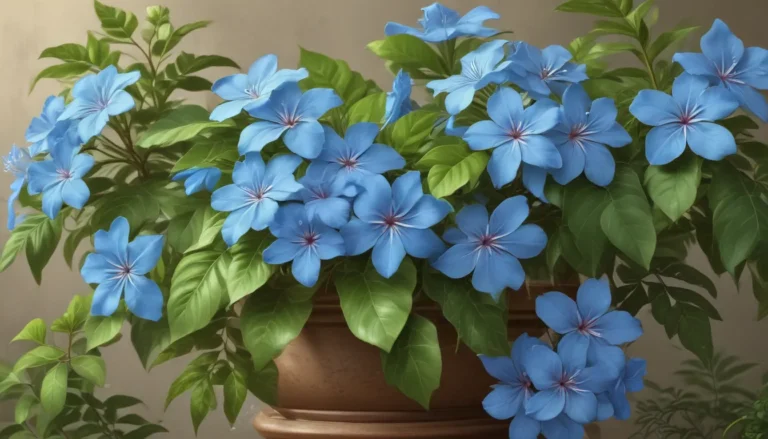The pictures we use in our articles might not show exactly what the words say. We choose these pictures to make you interested in reading more. The pictures work together with the words but don’t take their place. The words still tell you the important facts.
Welcome to the enchanting world of Alcea rosea, commonly known as hollyhock. This stunning flowering plant from the mallow family, Malvaceae, has captured the hearts of gardeners and plant enthusiasts worldwide with its tall stalks adorned with vibrant blooms. In this educational article, we will delve into the fascinating realm of Alcea rosea and uncover 17 mesmerizing facts about this magnificent plant. From its historical significance to its diverse varieties and unique medicinal properties, get ready to be inspired by the wonders of Alcea rosea.
Discovering Alcea Rosea: A Plant of Many Names
Let's kick things off by exploring the various names by which Alcea rosea is known. In addition to its popular moniker, hollyhock, this captivating plant is also referred to as garden mallow and rose mallow. These names reflect the plant's versatile nature and its widespread popularity among gardeners.
Unraveling the Origins of Alcea Rosea’s Name
The name "Alcea" has a rich history, derived from the Greek word "alkè," which translates to healing. This name hints at the plant's medicinal properties and its historical use in herbal medicine. On the other hand, "rosea" alludes to the rose-like flowers that grace the plant, adding a touch of elegance to its botanical identity.
The Allure of Alcea Rosea’s Towering Stature
One of the most striking features of Alcea rosea is its majestic height, often reaching up to 6 feet tall. This towering presence makes hollyhocks a captivating addition to any garden, adding depth and dimension to the landscape with their impressive stalks and vibrant flowers.
Embracing a Kaleidoscope of Colors: The Vibrant Flowers of Alcea Rosea
Alcea rosea blooms in a dazzling array of colors, ranging from delicate shades of pink and red to vibrant hues of yellow, purple, and white. These colorful flowers create a captivating display in gardens and floral arrangements, attracting the eye and uplifting the spirit with their beauty.
A Haven for Pollinators: Alcea Rosea’s Nectar-Rich Flowers
The nectar-rich flowers of Alcea rosea act as a magnet for bees, butterflies, and hummingbirds, making it a haven for pollinators in the garden. By planting hollyhocks, you can support these essential pollinators and create a thriving ecosystem in your outdoor space.
Blooms That Stand the Test of Time: Alcea Rosea’s Long Blooming Season
Hollyhocks boast a long blooming season, stretching from early summer to early fall. This extended period of blooming ensures a continuous splash of color in your garden, brightening up your outdoor space and bringing joy to all who behold it.
Flourishing in the Sunshine: Alcea Rosea’s Love for Full Sun
Alcea rosea thrives in full sun exposure and well-drained soil, making it an ideal choice for gardens bathed in sunlight. When planted in the right conditions, hollyhocks offer a spectacular display of color and beauty, enchanting all who admire them.
Embracing Self-Seeding Magic: Alcea Rosea’s Resilient Nature
One of the remarkable traits of Alcea rosea is its ability to self-seed, spreading and reproducing without human intervention. This self-seeding characteristic makes hollyhocks a low-maintenance choice for gardeners, ensuring a resilient garden that flourishes with minimal effort.
Tapping into Nature’s Medicine Cabinet: Alcea Rosea’s Medicinal Uses
Traditionally, Alcea rosea has been used in herbal medicine to treat a variety of ailments, including sore throats, respiratory issues, and digestive disorders. The roots of the plant were often brewed as a tea or used topically for skin irritations, showcasing the diverse medicinal properties of this botanical gem.
Unveiling Symbolic Meanings: Alcea Rosea’s Victorian Flair
In Victorian floriography, hollyhocks held symbolic meanings of ambition, fruitfulness, and fertility. These vibrant flowers were often exchanged as gifts to convey good luck and success in various endeavors, adding a touch of charm and elegance to floral arrangements.
From Garden to Table: Alcea Rosea’s Culinary Delights
Did you know that the young leaves of Alcea rosea are edible? These nutritious greens can be used in salads or cooked as a green vegetable, adding a unique culinary twist to your dishes. However, caution is advised, as other parts of the plant may be toxic if ingested.
A Splash of Color: Alcea Rosea as a Natural Dye Source
The vibrant flowers of Alcea rosea serve as a natural dye source, producing shades of pink, purple, and even black. Artisans have embraced these natural dyes for centuries, creating stunning fabrics and artworks that showcase the plant's colorful potential.
Weathering the Elements: Alcea Rosea’s Drought-Tolerant Nature
While Alcea rosea prefers regular watering, it is relatively drought-tolerant once established, making it a suitable choice for dry climates or water-wise gardening. This resilience in the face of adversity ensures that hollyhocks can thrive even in challenging environmental conditions.
Reaching New Heights: Alcea Rosea’s Vertical Gardening Appeal
Thanks to their tall and sturdy stems, hollyhocks lend themselves well to vertical gardening techniques. By training them to grow along trellises, fences, or walls, you can add a touch of vertical beauty to your outdoor space, creating a captivating garden feature that delights the eye.
Delving into the Past: Alcea Rosea’s Historical Significance
Hollyhocks have a rich history, dating back centuries to medieval cottage gardens. These timeless plants can still be spotted adorning the walls of old-world buildings in Europe, serving as a testament to their enduring popularity and cultural significance.
Adding Drama to the Landscape: Alcea Rosea’s Decorative Appeal
Due to their height and striking appearance, Alcea rosea is often used in landscaping to create dramatic backdrops or add architectural interest to outdoor spaces. Whether planted in borders, groupings, or standalone arrangements, hollyhocks bring a touch of elegance and charm to any landscape.
Embracing the Beauty of Seeds: Alcea Rosea’s Easy Growing Process
One of the most fascinating facts about Alcea rosea is its ease of growth from seed. With the right conditions and care, you can cultivate these plants effortlessly, allowing them to flourish and bloom in your garden with minimal effort.
Cultivating Your Garden Journey: The Magic of Alcea Rosea
Alcea rosea, with its towering stalks, vibrant blooms, and rich history, is a plant that captivates the imagination and inspires awe in all who encounter it. Whether you're a seasoned gardener or a nature enthusiast, hollyhocks offer a wealth of beauty, diversity, and practical uses that make them a valuable addition to any garden. So why not plant some hollyhocks in your own garden and witness the magic of Alcea rosea unfold before your eyes?
FAQs: Unveiling the Mysteries of Alcea Rosea
- How tall can Alcea rosea grow?
-
Alcea rosea can reach impressive heights, growing up to 6 feet tall or even taller in some cases.
-
Does Alcea rosea require full sun?
-
Yes, Alcea rosea thrives in full sun and requires a minimum of 6-8 hours of direct sunlight per day to grow and bloom successfully.
-
Can Alcea rosea tolerate drought conditions?
-
While Alcea rosea prefers regular watering, it can tolerate short periods of drought once established. Prolonged drought may impact its growth and flowering.
-
Are hollyhocks deer-resistant?
-
Hollyhocks are not generally deer-resistant. To protect them from deer, consider using fencing or deer deterrent sprays in areas prone to deer activity.
-
Can Alcea rosea be grown in containers?
- Yes, Alcea rosea can be grown in containers, provided they have sufficient space for their deep taproots. Choose large containers with good drainage to support the plant's growth.
Conclusion: Embrace the Beauty of Alcea Rosea in Your Garden
In conclusion, Alcea rosea, with its tall stature, vibrant blooms, and diverse uses, is a plant that continues to enchant and inspire gardeners and nature lovers worldwide. Whether you're drawn to its stunning aesthetics, its pollinator-attracting properties, or its rich cultural heritage, hollyhocks have something to offer everyone. By planting Alcea rosea in your garden, you can experience firsthand the wonder and beauty of this remarkable plant, adding a touch of elegance and magic to your outdoor space. So go ahead, cultivate your own garden oasis with hollyhocks and embark on a botanical journey filled with beauty, creativity, and joy.
